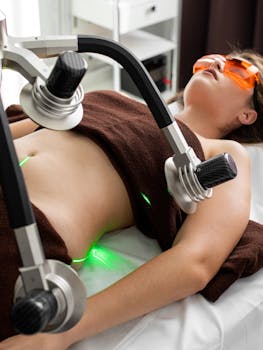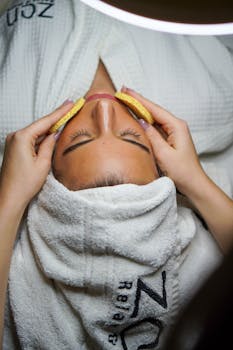Many people focus on facial skincare and forget that hands can reveal age, sun damage, and texture changes just as clearly. A chemical peel for hands is a medical or cosmetic treatment that uses acids to exfoliate the outer layers of skin on the dorsum and fingers, reducing brown spots, softening crepey texture, and promoting a smoother, more even tone. This guide explains what to expect before, during, and after the procedure so you can make an informed decision.
Acid peel for hands: types, strengths, and how they differ
Not all peels are the same. An acid peel for hands may use alpha-hydroxy acids (AHAs) such as glycolic or lactic acid for light resurfacing, beta-hydroxy acids (BHAs) like salicylic acid for better oil penetration, or stronger agents such as trichloroacetic acid (TCA) for medium-depth results. The choice depends on the skin concern—surface discoloration and fine lines often respond well to AHA treatments, while deeper pigment and rough texture may need TCA under professional supervision. Your clinician will assess skin type, history of scarring or hyperpigmentation, and desired downtime when recommending strength and frequency.
Preparing for the treatment
In the week or two prior to a peel, providers typically advise avoiding prolonged sun exposure, tan beds, and irritant topical products (retinoids, exfoliating scrubs). A pre-peel regimen might include gentle moisturizers, broad-spectrum sunscreen, and in some cases, a topical bleaching or retinoid product to reduce the risk of uneven pigment after deeper peels. Communicate any medications, recent procedures, or a history of cold sores and allergies with your clinician to prevent complications.
What the procedure feels like
Most light hand peels are applied in-clinic and take just a few minutes. Patients often report a tingling or warming sensation during application; stronger peels can cause stinging that is typically brief. Some providers offer topical numbing for greater comfort, though this is less common for superficial hand peels. After application, the solution is neutralized or removed according to the product instructions. The process is usually quick and many people can resume normal activities immediately, though redness and sensitivity are common.
Downtime and expected results
Downtime ranges from none with very superficial peels to several days of flaking and redness for medium-depth peels. Expect peeling that begins a few days after treatment; hands may look temporarily worse before improved texture and fading of spots emerge. Noticeable improvements in tone and texture often appear within 1–4 weeks, with optimal results after a series of treatments spaced a few weeks apart. For long-lasting benefits, continue sun protection and consider maintenance peels or complementary in-office treatments.
Aftercare and safety
Post-procedure care is important for both results and safety. Keep treated areas moisturized, avoid sun exposure, and use broad-spectrum sunscreen daily—hands are often re-exposed to UV radiation and can rebound with new spots if unprotected. Avoid picking at peeling skin to reduce scarring or infection. If you notice increased pain, excessive redness, swelling, or signs of infection, contact your provider promptly. For reliable background information about how chemical peels work, consult an authoritative source like this overview on chemical peels (Wikipedia).
Choosing an experienced clinician is especially important for hands, where thin skin and visible tendons can affect outcomes. Board-certified dermatologists and trained medical aesthetic providers can tailor concentration, neutralization technique, and follow-up to minimize risks such as post-inflammatory hyperpigmentation or scarring. For broader context on skincare technology and innovations that may complement hand resurfacing, see this descriptive anchor text.
Who is a good candidate?
Ideal candidates are those with sun-damaged hands, brown spots (lentigines), rough texture, or early crepey changes who are willing to follow sun protection and aftercare instructions. People with active skin infections, recent tanning, certain medications that increase photosensitivity, or a history of keloids should discuss alternatives with their clinician. A patch test may be performed for sensitive or reactive skin to reduce the risk of an adverse reaction.
Common risks and how they’re managed
Risks include temporary redness, irritation, increased sensitivity, and rarely pigment changes or scarring. Providers manage these by choosing appropriate acid strength, preconditioning skin when needed, and advising strict photoprotection after treatment. Follow-up appointments help monitor healing and address any concerns early.
- Takeaways:
- Peels can improve sun spots and texture on the hands with minimal downtime for superficial treatments.
- Type and strength of the acid matter—AHAs for light issues, TCA for deeper correction under professional care.
- Proper pre- and post-care, including sunscreen, is essential for safe, lasting results.
How many sessions will I need?
Superficial improvement may be seen after one session, but most people benefit from a series of 2–6 treatments spaced several weeks apart depending on peel depth and treatment goals.
Is the procedure painful?
Most patients report mild tingling or stinging during application. Topical numbing can be used for comfort with stronger peels. Post-treatment discomfort is usually manageable with over-the-counter pain relief and soothing moisturizers.
When should I avoid a hand chemical peel?
Avoid peels if you have active rashes, infections, recent sunburn, or are using photosensitizing medications unless cleared by your clinician. Pregnant or breastfeeding individuals should consult their healthcare provider about safety before proceeding.






